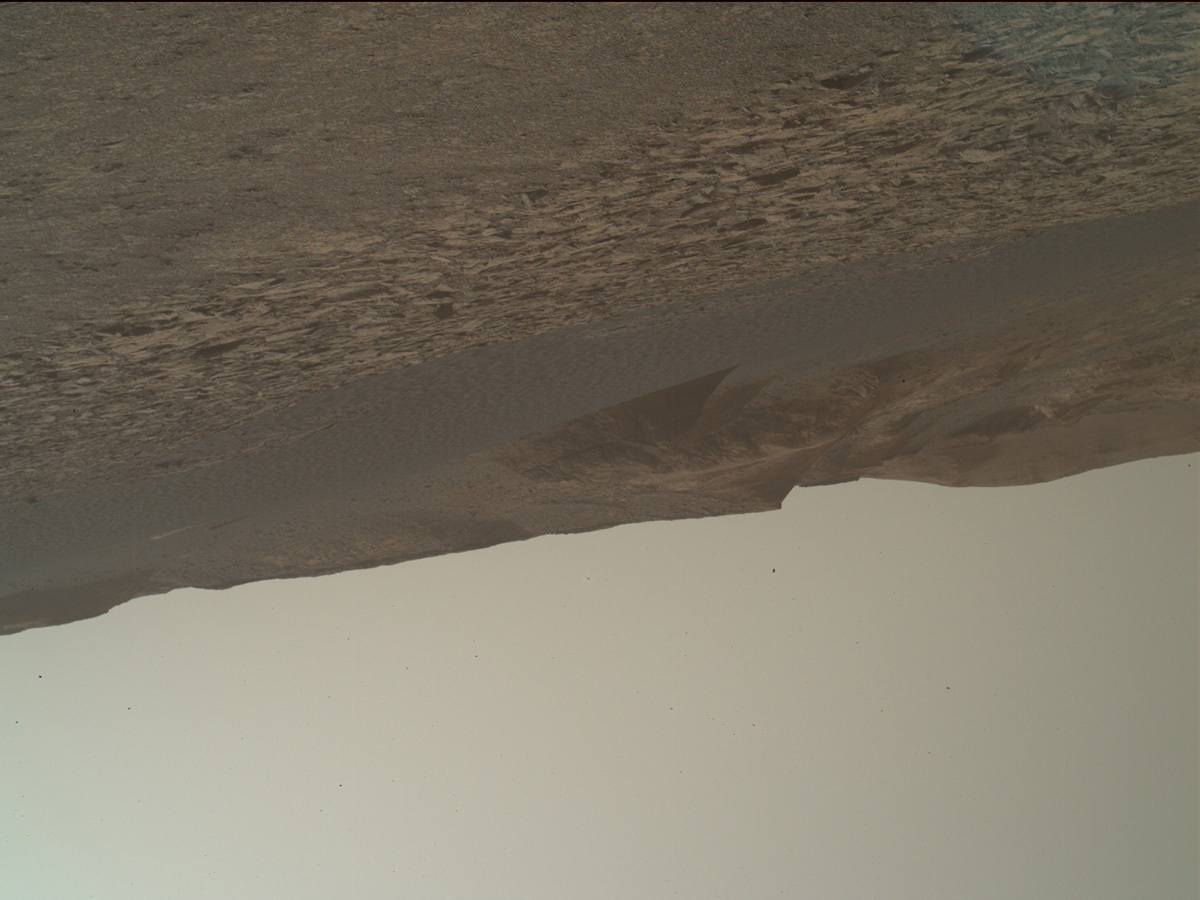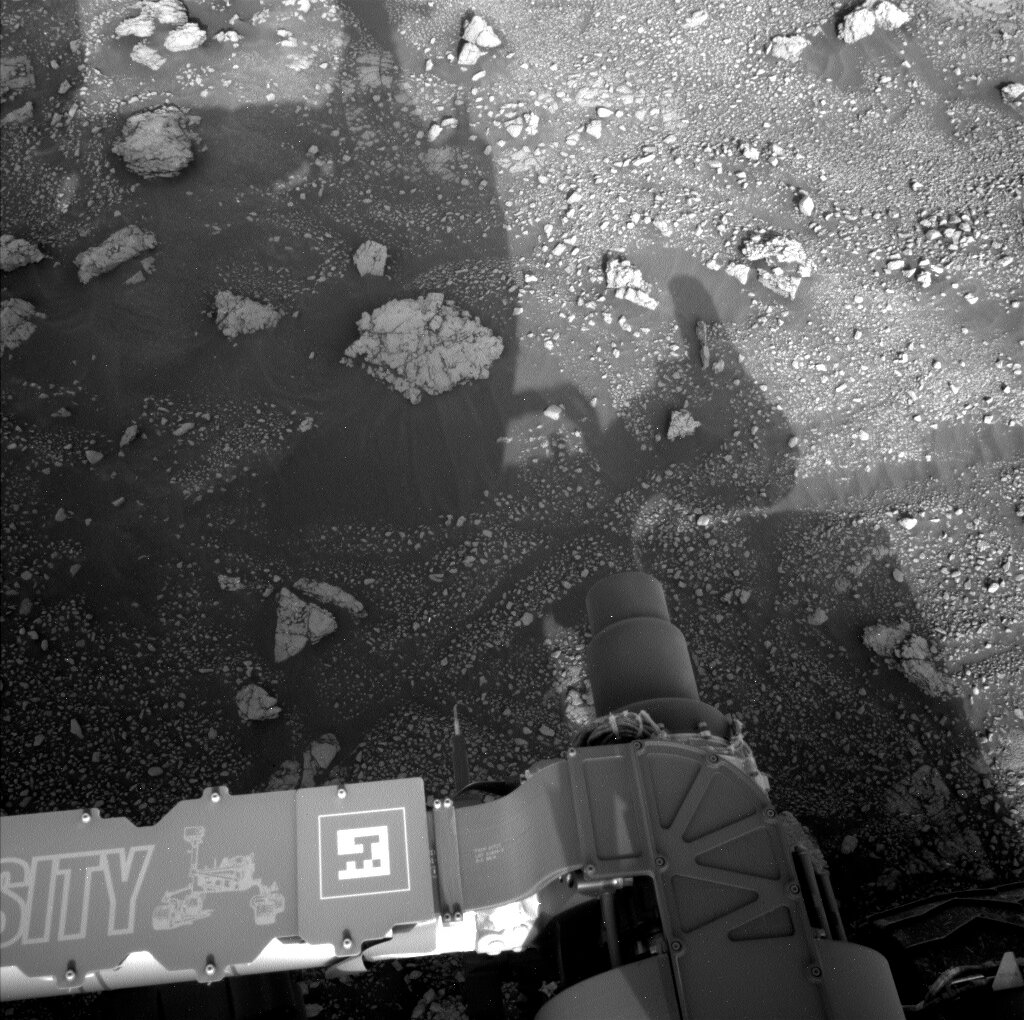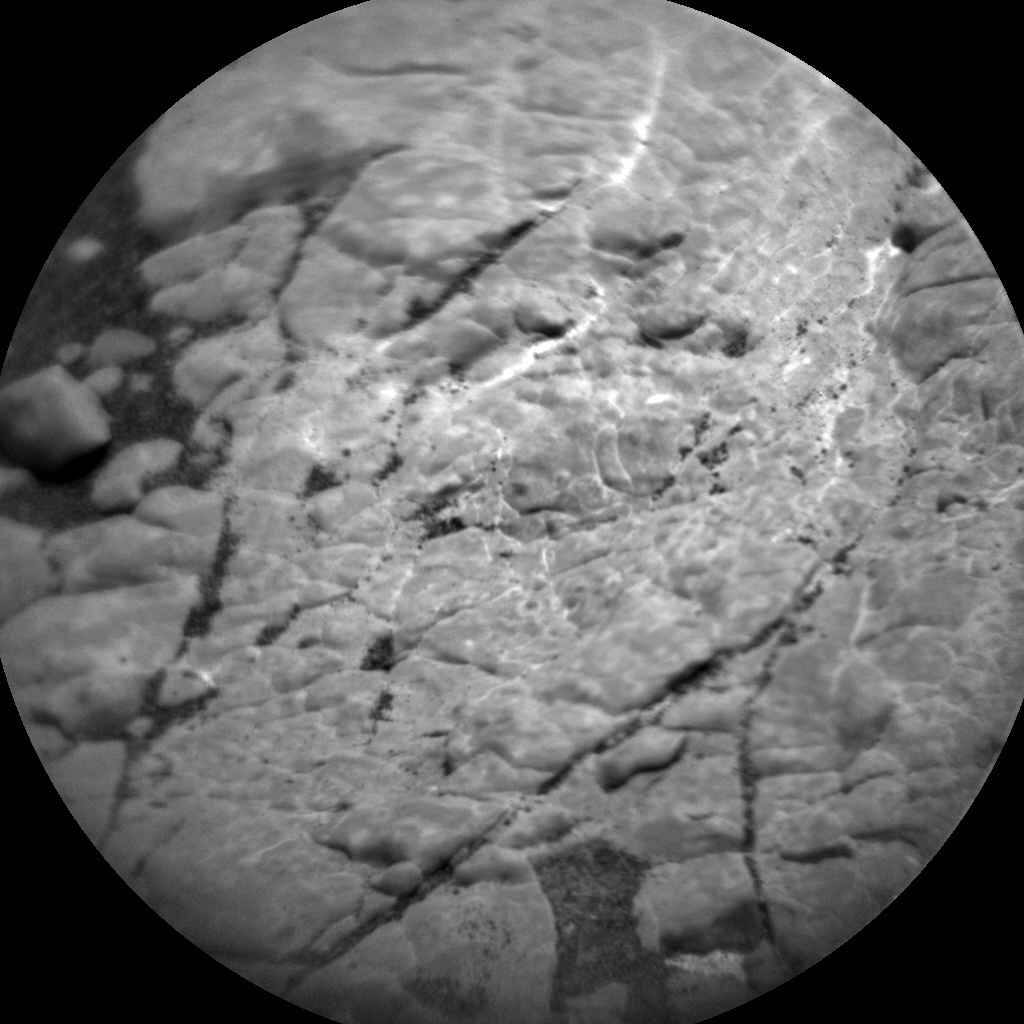February 8, 2021
Sols 3013-3014: It's Freezing Cold…

NASA's Mars rover Curiosity acquired this image using its Mars Hand Lens Imager (MAHLI), located on the turret at the end of the rover's robotic arm, on Sol 3024 of the Mars Science Laboratory Mission. Credit: NASA/JPL-Caltech/MSSS. Download image ›
It’s freezing cold right now here in Europe, with temperatures just below 32 F (0 °C), which sparked me to look at the weather report from Gale crater, provided by REMS, our weather station. I find that temperatures are between 21 and -101 F at Gale crater at the moment, that’s between -6 and -74 in degree Celsius. So, Mars is a lot colder than Earth in front of my window right now. But how cold is it compared to Earth temperatures more general? Well, in the UK, where I am located, the coldest day ever recorded was -17 F (-27.2 °C) in January of 1982, but there are much colder temperatures recorded on Earth, with the record being −128.6 °F (−89.2 °C) measured in July 1983 at the Soviet Vostok station in Antarctica. Are you feeling as cold as I am now?
Curiosity will continue to measure the temperatures regularly, and you can look at the weather report here: https://mars.nasa.gov/msl/weather/. In today’s plan there are also some atmospheric observations, looking at the crater rim and the horizon to investigate the dust load of the atmosphere, and conducting a dust devil survey.
In the last blog you saw the rather rubbly and broken up terrain the rover navigates at this location, and a close up, taken by MAHLI is shown in this blog. The bedrock is reddish and it has the white veins that we are by now so familiar with. What its exact chemistry is and how that compares to other locations is APXS’s task to find out. In today’s plan, APXS is therefore investigating the target "Labouquerie."
ChemCam is looking into the distance with a long distance RMI investigating target "Monbazilliac." Mastcam does double duty on the target Azerat, with stereo and multispectral imaging. It also adds a workspace image and a stereo mosaic on a ridge, target name "Grand Brassac," in the distance to its imaging work.
We are not here for long, though, as the next drive will immediately follow those investigations, so stay tuned for the next view of the rubbly landscape as early as tomorrow!









